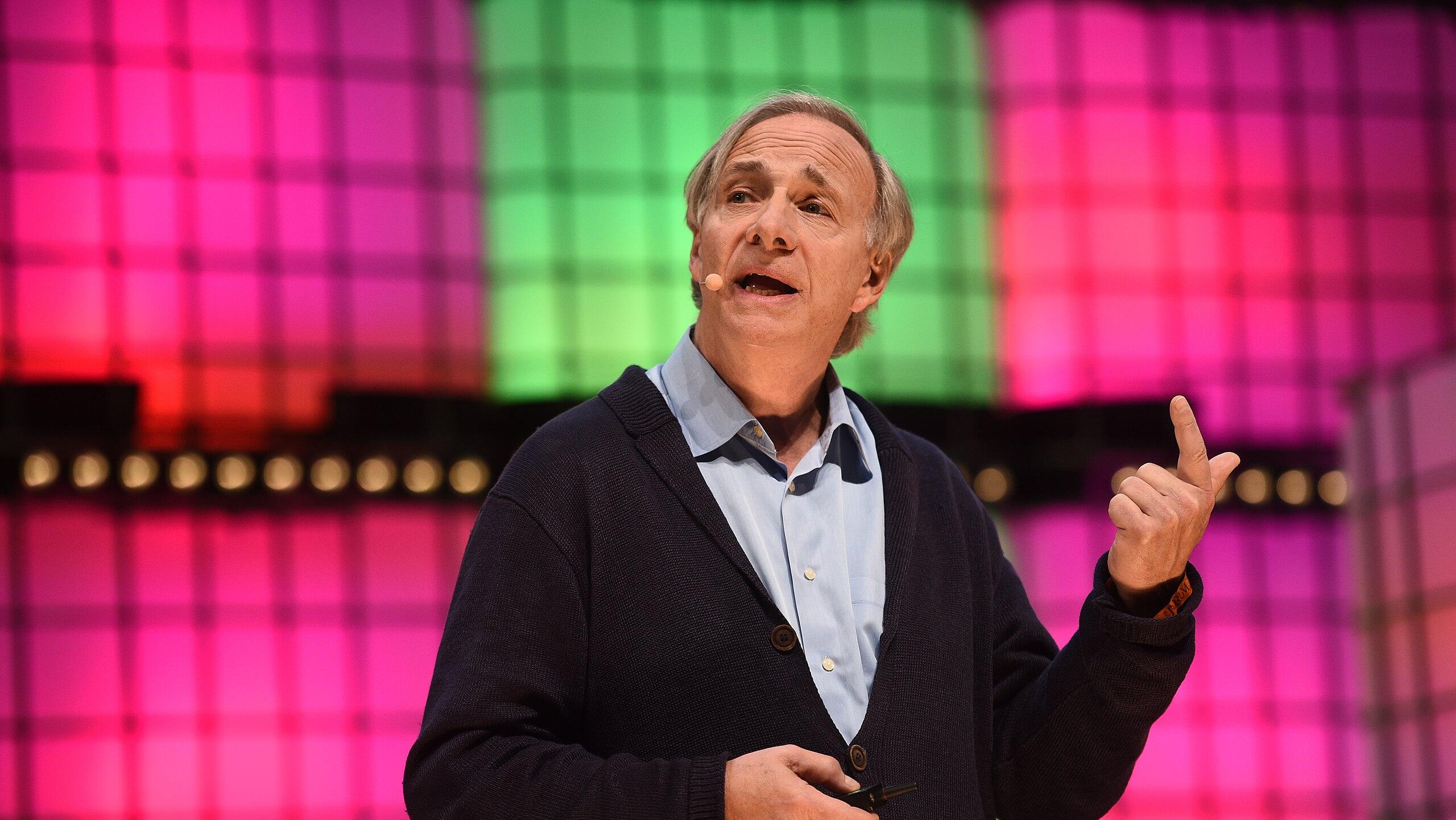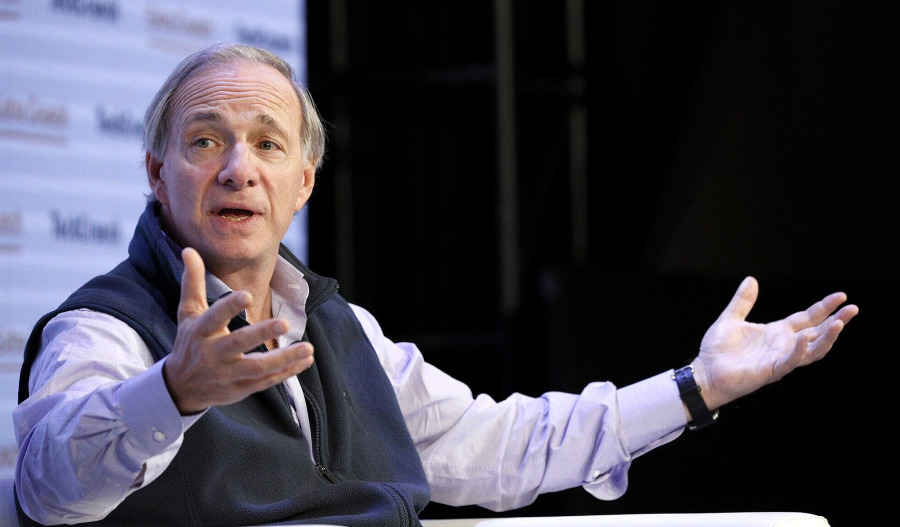Just as a stopped clock is right twice a day, the forecasts and outlooks from the contrarian commentators will eventually – if you wait long enough – align with what the market is really trying to tell us. Trouble is, sometimes the market becomes so immune to certain economists or market forecasters getting it wrong that everything they say is taken with a huge grain of salt.
Here in Australia, high-profile Warren Hogan of Judo Bank is one economist who almost relishes having a counter view to most of his peers.
Moving offshore, Ray Dalio the billionaire founder of hedge fund leviathan Bridgewater Associates, like Hogan, is never shy to run an alternative view of the market up the economic flagpole for the world to chew on.
So with markets hitting record highs, debt warnings sounding ominous harbingers of things to come, and artificial intelligence (AI) reshaping everything, Azzet focused on the latest nostrums from Bridgewater Associates’ self-imposed market oracle.
U.S. debt warning heightens base case for gold and bitcoin
Admittedly, finding United States economists genuinely concerned about America’s runaway debt situation isn’t hard.
However, Dalio has magnified that concern by warning that the U.S. economy’s ballooning federal debt – projected to cost US$13.8 trillion in interest payments over the next decade, per the Congressional Budget Office – could trigger some economic haemorrhaging not yet priced into bond or currency markets.
The solution Dalio is proposing is to rethink the traditional 60/40 portfolio (that’s stocks and bonds respectively) and allocate 15% to gold and Bitcoin for diversification.
Both assets have performed well in 2025, each still up around 25% year-to-date.
Interestingly, Dalio’s suggestions coincide with a heightened short-term risk of gold pulling back.
While gold has seen around US$90 blasted off of its shiny hide in recent days, Citigroup now expects prices to decline below US$3,000 an ounce in the coming quarters, forecasting a cooldown after this year’s record-setting run.
Meanwhile, after some bubble-like price behaviour, profit-takers may sell out of Bitcoin, putting greater downside risk on the cryptocurrency.
While some analysts predict a climb past US$200,000 by year-end, fuelled by corporate and national adoption, BitMEX co-founder Arthur Hayes recently warned of Bitcoin’s potential drop to US$100,000.
Hayes cites macroeconomic headwinds that could trigger significant corrections in the cryptocurrency market.
The prediction comes after Hayes liquidated over US$13 million in crypto assets, signalling his bearish stance on short-term market conditions.
Hayes’ forecast follows Bitcoin’s protracted fall in six consecutive sessions, dropping to $112,000.
The devaluation of money
Underscoring Dalio’s latest thinking around gold and Bitcoin is the devaluation of money.
Given that gold is an historical hedge against inflation, and Bitcoin is increasingly seen as “alternative money”, he sees both serving as stores of value in uncertain times.
“I’m strongly preferring gold to Bitcoin, but that’s up to you,” said Dalio on who warns against investors overloading on either, while citing diversification as the key.
The not-so-magnificent-seven
Meanwhile, Dalio’s is wary of equities, particularly the Magnificent Seven (think Alphabet, Amazon, Meta), especially with tariffs back in the spotlight.
“They’re expensive relative to even optimistic future cash flows,” he noted, echoing his many earlier warnings.
When markets reach epic price-to-earnings (P/E) multiples like they are now, investors and analysts are much more circumspect about finding positives not already priced in.
It’s any future blue sky that helps to justify why high multiples might, this time, be deserved.
Interestingly, in an about-face from their reaction to the Liberation Day tariffs, analysts now think tariffs averaging 15% might not be as inflationary as initially feared.
However, having seen reports that exporters, particularly in China, are resisting cost-sharing due to thin margins, Roger Montgomery, founder and chairman of Montgomery Investment Management, isn’t so sure.
Meanwhile, Adidas warned this week that it may hike prices in the U.S. as it faces a US$231 million increase in costs in the second half of 2025 in connection with tariffs.
According to Budget Lab estimates, tariffs could add US$2,400 annually to household costs, while companies like Stellantis, which reported a US$1 billion hit from tariffs, are already being squeezed.
For consumer-facing firms, Montgomery believes pricing power is critical.
“Those unable to pass costs to customers will see gross margins erode, while others with strong brands could fare better,” said Montgomery.
Meanwhile, investors are encouraged to monitor companies’ ability to absorb or offset tariff costs – whether through price hikes or operational efficiencies.
Sectors like retail and autos, adds Montgomery, are particularly exposed.
Microsoft’s AI-Powered surge
Montgomery sees Microsoft’s latest earnings report as a masterclass in execution.
The company closed its fiscal year with a blowout quarter: revenue up 18% year-on-year to US$76.4 billion, beating estimates by US$2.6 billion.
Azure, its cloud powerhouse, grew 39%, outpacing guidance, while Microsoft Cloud now accounts for 61% of revenue, up four percentage points from last year.
Earnings per share hit US$3.65, a US$0.27 beat, with operating margins climbing to 45% despite heavy AI investments.
Azure’s growth is the headline, driven by enterprise demand for cloud infrastructure.
“Management didn’t break out AI’s specific contribution this quarter, but Azure’s US$75 billion in trailing 12-month sales (up 34 per cent) underscores its dominance,” said Montgomery.
For context, Montgomery reminds investors that Google Cloud trails at US$49 billion, and Amazon’s AWS leads at US$112 billion.
Meanwhile, Microsoft Copilot adoption is accelerating, boosting Microsoft 365’s average revenue per user, while commercial bookings soared 37 per cent to over US$100 billion.
However, Montgomery also reminds investors that challenges remain, with data centre shortages capping cloud growth, while capex jumped 27% to US$24.2 billion as Microsoft races to meet AI demand.
“A rift with OpenAI, whose losses are hitting Microsoft’s books (US$1.7 billion in “other expenses”), adds uncertainty, especially with GPT-5’s imminent release, where Microsoft holds exclusive access,” said Montgomery.
Needless to say, with FY26 guidance pointing to double-digit growth, Microsoft would be expected to remain a core holding for those betting on AI’s long-term payoff.
The AI arms race: hyperscalers go all-in
Anyone who doubts that there’s an arms race waging in AI only needs to look at Meta’s recent offer by Mark Zuckerberg to attract exceptional talent.
Zuckerberg is making headlines with US$100 million salary offers for top AI talent – more than what’s paid for some entire sports teams.
According to FactSet, hyperscalers such as Meta, Amazon, Microsoft, and Alphabet are projected to spend US$317 billion on capital expenditures (capex) this year, doubling the estimates from ChatGPT’s debut in 2022.
To put that number in context, it represents 1% of U.S. Gross Domestic Product (GDP).
Not to be left behind, Alphabet recently upped its AI-related capex by US$10 billion to US$85 billion, signalling no one’s blinking in this race.
The Magnificent Seven (six if you exclude Tesla) have driven U.S. market gains, but their spending raises a trillion-dollar question: Will these bets yield above-market returns?
Remember, the higher the price you pay, the lower your return.
While free cash flow and earnings ultimately drive stock value, hyperscalers are burning cash to be the el supremo in AI.
Remember, when China’s DeepSeek model rattled markets a little under a year ago, tanking Nvidia 17% in a day, investors got a master class in how skittish markets might be again, if the expectation of a straight upward climb in growth path is interrupted.
Despite Microsoft’s massive earnings beat, Montgomery sees earnings season as being less about profits and more about vision.
“If AI delivers transformative returns, shareholders could see massive payouts down the line,” he said.
“But if it’s a winner-take-all race to superintelligence, some may overpay for talent and tech. Investors should focus on companies balancing bold bets with disciplined execution – Microsoft and Alphabet stand out, but Meta’s aggressive spending is worth watching closely.



